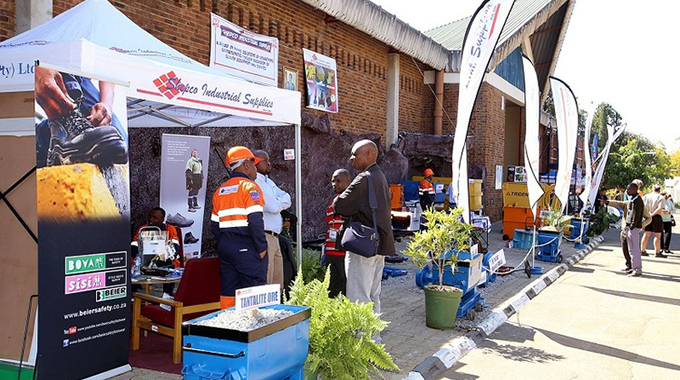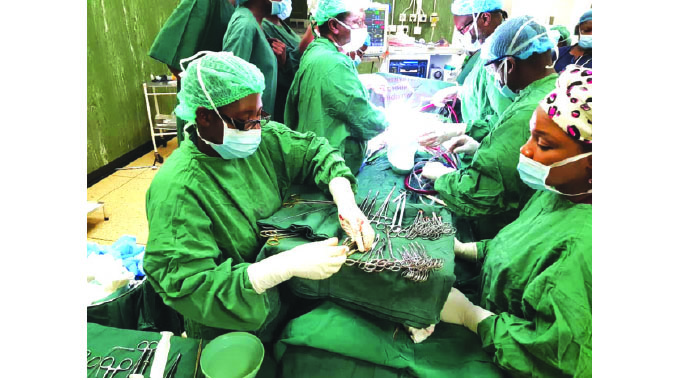Ending child marriages: Layering approach the way to go

Paidamoyo Chipunza – Our Children, Our Future
A myriad of factors have been associated with child marriages in Zimbabwe, key among them being religious and cultural beliefs, poverty, lack of serious sex education in schools and inadequate knowledge on children’s rights and other legal systems that support them.
Child marriage in itself has been identified as one of the impediments to girls’ emancipation, a situation that limits their potential to excel in life.
In fact, research and statistics have shown that child marriages force girls to drop off school, increase their chances of acquiring HIV and AIDS, increase their chances of experiencing complications while giving birth and reduce their chances of gaining financial independence among other consequences, thus it is of paramount importance for the country to end this social ill.
Latest statistics from the United Nations Children’s Fund reveal that 32 percent of girls in Zimbabwe are married before the age of 18 and four percent are married before their 15th birthday.
This is despite the fact that Zimbabwe has criminalised all marriages below the age of 18 (the 2016 Constitutional Court ruling).
The statistics further reveal that prevalence of child marriages is highest in Mashonaland Central, where 50 percent of children are married off before they reach the age of 18, followed by Mashonaland West whose figures stand at 42 percent, Masvingo 39 percent, Mashonaland East 36 percent, Midlands 31 percent, Manicaland 30 percent, Matabeleland North 27 percent, Harare 19 percent, Matabeleland South 18 percent and Bulawayo 10 percent.
Encounters with some children who were forced to marry early or who married early revealed that a number of factors contributed to their decision-making.
Isabel Munhenzva (not her real name), who has a moderate down syndrome disease is one such victim.
Her father works as a gardener in Harare where he earns RTGS$200.
Her mother, who is a staunch believer of one of the apostolic sects, spends most of her time at church and has no source of income to complement her fathers’ earnings.
Isabel’s parents have three other minor children who live with their grandmother in rural Gutu.
Because of her condition, coupled with financial incapacitation and lack of knowledge on where to seek assistance, Isabel did not complete her primary education.
She dropped off school before completing her primary level education, after which she was impregnated at the age of 14 years.
“We would have wanted her to get married.
“If the person who impregnated her had agreed, it would have assisted us in a big way,” said Isabel’s father.
“What we now want is for the man to help us look after his son (Isabel’s baby) through a maintenance fee,” he added, without even realising that he was contributing to violation of his girl child’s right to justice.
Asked if he made a police report against the perpetrator, Isabel’s father insisted on getting a maintenance fee.
“I am not interested in getting him arrested because it does not give me anything,” he said. “
“All I want is for him to pay a maintenance fee, and that is the route I am pursuing.”
For Isabel’s father, it is the monetary aspect that matters, maybe because of his poor financial background.
However, this case reveals even more complex issues associated with child marriages i.e her parents’ level of ignorance on children’s rights and implications of their violations, something that can be attributed to their own level of knowledge of these and other associated issues.
Isabel failed to complete primary education as she was impregnated — possibly without her consent and her perpetrator was never brought to book — possibly it was a relative or a close family friend whom the parents do not want to strain their relations with.
This case also presents a typical patriarchal society often associated with African traditions, that leave all decisions making to man.
For some reasons, Isabel’s mother doesn’t seem to have spoken against his husband’s decision, possibly her religion also contributed to her reserved-kind-of-approach to the whole issue.
Throughout the conversation, her father keeps stamping his authority over his daughter in singular, not in plural as a family decision.
In as much as fathers usually have the final say in a family, empowered mothers are usually known of going out of their way in serving the interests of their daughters.
Maybe, Isabel’s mother is one such woman requiring empowerment to enable her to realise what is good and what is bad for the future of both her daughter and her grandson.
Thus ending child, early and forced marriages requires concerted efforts from multiple stakeholders as Panos Institute Southern Africa put it across in their media brief on ending child marriages in Zimbabwe: Child marriage is a multi-faceted phenomenon that requires involvement of the physical, social, cultural and legal support from different stakeholders.
It needs a multi-sectoral approach in order to win the fight.
Zimbabwe is one of the 10 countries in Africa implementing the United States’ President’s Emergency Plan for Aids Relief (PEPFAR)’s DREAMS (Determined, Resilient, Empowered, AIDS-free, Mentored, Safe women) project, aimed at addressing exactly that challenge of fragmented approaches to solving challenges.
A recent research published in PloS One Journal titled: The DREAMS core package of interventions: A comprehensive approach to preventing HIV among adolescent girls and women noted that although individual interventions have shown promise, no single intervention has emerged that can avert the majority of new HIV infections, hence introduction of PEPFAR’s “layering approach”.
Authors of this journal attribute their conclusion to complex constellation of factors that place girls and young women at risk of contracting HIV.
“This underscores the need to develop comprehensive packages of social, economic and biomedical interventions to both reduce girls’ vulnerability to HIV and increase their agency,” wrote the authors.
Similarly, no single intervention can avert child, early and forced marriages.
In fact, there is need for a coordinated approach, offered as a whole package to intended beneficiaries for it to make meaningful impact.
Layering simply means providing multiple, but coordinated interventions to selected beneficiaries for maximum impact.
In the case of Isabel above, with the layering approach, she and her family could be beneficiaries of interventions that empower them to reduce their level of both poverty and knowledge, as well as assisting them with legal advice to seek justice.
The idea behind this layering of services is to ensure that there is no duplication of services and that there is effective impact on assistance rendered.
The Government of Zimbabwe has already acknowledged the success of this initiative and at some point showed commitment to replicating it across the country.
At the moment, the model is being used in selected districts funded by PEPFAR.
Should it be replicated nationally, it may go a long way in ending child marriages in Zimbabwe.
Zimbabwe is one of the countries that committed to ending child marriages by the end of 2020, which is just next year, under the Ministerial Commitment on comprehensive sexuality education and sexual and reproductive health services for adolescents and young people in Eastern and Southern Africa.
The country has also signed and ratified some regional and international instruments against child marriages, which include, but not limited to the Convention on the Elimination of All Forms of Discrimination Against Women (CEDAW) and the African Charter on the Rights and Welfare of the Child.
Towards the end of last year, a plan of action to end child marriages was also developed.
With such extraordinary commitment, the nation and the world await to see a reduction of the 32 percent of girls in Zimbabwe who are being married before they reach 18 years.







Comments